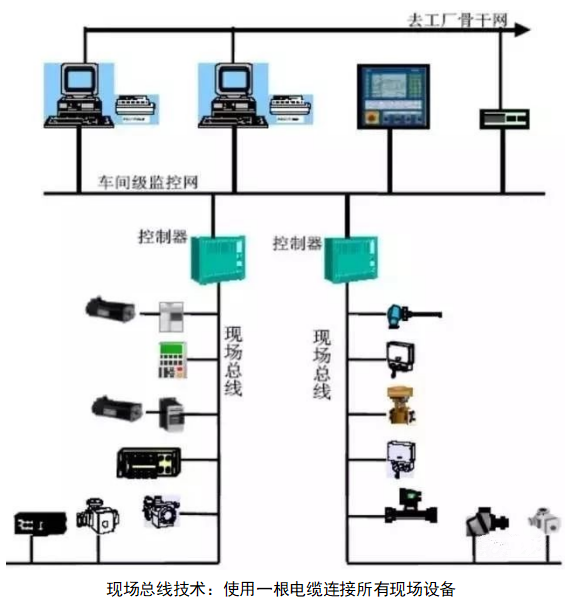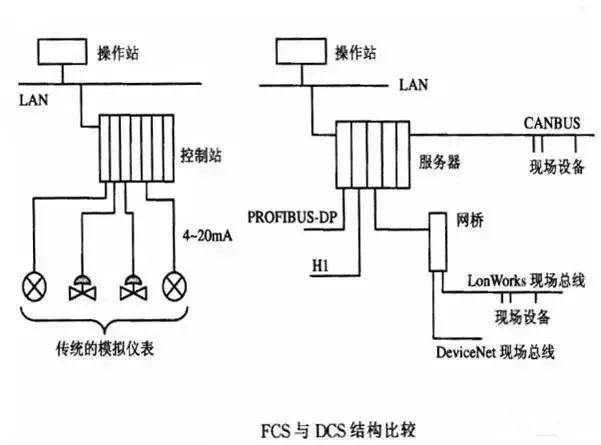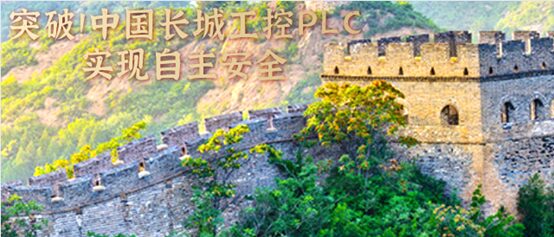 Click on the aboveOFweek Industrial Control to follow us
Click on the aboveOFweek Industrial Control to follow us

With the rapid development of industrial technology, distributed control systems and field control systems have emerged. The three major control systems in industrial process control are PLC, DCS, and FCS. Some people believe that FCS is developed from PLC; others think that FCS is developed from DCS. FCS, PLC, and DCS are closely related but also have some differences.
PLC controllers are electronic systems for digital operation, designed specifically for applications in industrial environments. They use a type of programmable memory to store programs internally, execute logical operations, sequential control, timing, counting, and arithmetic operations, and control various types of machinery or production processes through digital or analog input or output.
DCS (Distributed Control System) is also known as computer distributed control systems. It rapidly developed in the mid-1970s, combining control technology, computer technology, image display technology, and communication technology, also known as 4C technology, to achieve monitoring, control, and management of production processes. It breaks the limitations of conventional control instruments and better addresses the risks posed by early computer systems that concentrated information, management, and control.
The core of the FCS (Fieldbus Control System) is the bus protocol, based on digital intelligent field devices, and essentially focuses on localized information processing.
The Basic Characteristics of Process Control Systems Composed of Large PLCs
(1) Top-down structure, PLC can function as an independent DCS or as a subsystem of DCS.
(2) PID is placed in the control station, allowing for continuous PID control and other functions.
(3) A PC can serve as the master station with multiple similar PLCs as slave stations; alternatively, one PLC can be the master with multiple similar PLCs as slaves, forming a PLC network.
(4) Mainly used for sequential control in industrial control, new PLCs also have closed-loop control functions.
The Basic Characteristics of DCS Control Systems
(1) A top-down tree structure, where communication is key.
(2) PID is in the controller, connecting the computer with field instruments.
(3) It has a tree topology and parallel continuous link structure, with many cables running from the relay station to field instruments in parallel.
(4) The signal system includes discrete signals and analog signals.
(5) DCS generally consists of field instrument layer, control unit layer, factory (workshop) layer, and enterprise management layer.

The Basic Characteristics of FCS Control Systems
(1) FCS is a fusion of 3C technology. It is suitable for intrinsically safe, hazardous areas, variable processes, and difficult environments.
(2) Field devices are highly intelligent, providing all-digital signals; a single bus connects all devices.
(3) A bidirectional digital communication bus from the control room to field devices is interconnected, bidirectional, serial multi-node, and open, replacing one-way, single-point, parallel, closed analog systems.
(4) Control functions are completely decentralized.

Comparison Between DCS Control Systems and PLC Control Systems
DCS is a “distributed control system,” while PLC is merely a control “device”; the distinction lies in “system” versus “device.” The system can implement the functions and coordination of any device, while the PLC device only realizes the functions of its unit. In terms of networking, the network is the central nervous system of the control system.
The DCS system, such as the HOLLiAS MACS system, is divided into system network and control network levels from top to bottom, with the system network interconnecting field control stations and system operator stations, and the control network facilitating communication between field control stations and intelligent I/O units, ensuring real-time reliable information transmission.
In contrast, PLCs primarily operate individually, and when communicating with other PLCs or host computers, they generally use a single network structure. In terms of network security, PLCs do not provide adequate protection measures.
DCS designs include many scalable interfaces, making it easy to connect external or expanded systems, while once a PLC-based system is completed, adding or removing operator stations is quite challenging. DCS employs dual redundancy in its control units to ensure the safety and reliability of DCS control devices. When a critical control unit fails, a redundant unit seamlessly switches to become the operational unit, ensuring the overall system’s safety and reliability.
PLC systems typically lack redundancy concepts, making it impossible to implement redundant control strategies. Particularly when a PLC unit fails, the entire system must be stopped for replacement and maintenance, requiring reprogramming. Therefore, DCS systems are inherently safer and more reliable than PLCs. The hardware reliability of DCS and PLC is roughly comparable. PLCs excel in software aspects, utilizing a sequential scanning mechanism, dominating in high-speed sequential control. PLCs have a cycle period of around 10ms, while DCS control stations operate around 500ms.
While DCS implements sequential interlocking functions, it is weaker compared to PLCs, and its logical execution speed does not match that of PLCs. In contrast, PLC-based systems generally have lower costs. DCS field control stations typically employ centralized control; although remote distributed I/O is supported, it is rarely used due to cost constraints. PLCs, based on fieldbus remote distributed I/O, are smaller, more flexible, and user-friendly, effectively saving wiring costs.
Comparison Between FCS and DCS Control Systems
It can be said that FCS combines the characteristics of both DCS and PLC, taking a revolutionary step forward.
(1) FCS is an open system with open technical standards; the field devices of FCS have interoperability and compatibility, allowing users to select products from different manufacturers and brands for optimal system integration. In contrast, DCS systems are closed, with products from different manufacturers being incompatible.
(2) FCS achieves fully digital signal transmission, allowing communication from the lowest level sensors and actuators to the highest level, providing strong support for MES and ERP, and importantly allows for remote diagnostics, maintenance, and configuration of field devices; DCS communication functions are significantly limited, although it can connect to the Internet, it cannot reach the lowest levels, providing limited information and lacking remote operation capabilities for field devices.
(3) FCS is fully decentralized, discarding I/O units and control stations from DCS, decentralizing control functions to field devices, making system expansion very easy; DCS only decentralizes to the controller level, emphasizing the controller’s functions, with data highways being key.
(4) FCS is fully digitalized, achieving high control precision of ±0.1%; DCS signal systems are binary or analog, requiring A/D and D/A conversion, resulting in a precision of ±0.5%.
(5) FCS can place PID closed-loop functions in field transmitters or actuators, along with digital communication, shortening sampling and control cycles, currently increasing from DCS’s 2-5 times per second to 10-20 times per second, improving regulation performance.
(6) FCS saves a substantial amount of hardware, cables, and installation auxiliary equipment, significantly reducing installation and debugging costs, making its cost much lower than that of DCS.

FCS is an open, fully distributed, intelligent control system. However, traditional DCS and PLC systems have been in use for decades, evolving into practical and highly reliable systems. With their respective developments, there is a trend towards convergence. New DCS systems already have strong sequential control functions; new PLCs are also competent in closed-loop control, and both can form large control networks.
—END—


OFweek Industrial Control Network is recruiting part-time content creators and columnists. Please send your resume and original works to the email: [email protected]. We have no requirements for profession, location, etc., and welcome interested and capable friends to join!
Recent Activities




Review of Previous Highlights


About Us

Click “Read Original” to register for the 2021 China Intelligent Manufacturing Digital Transformation Summit!
Click